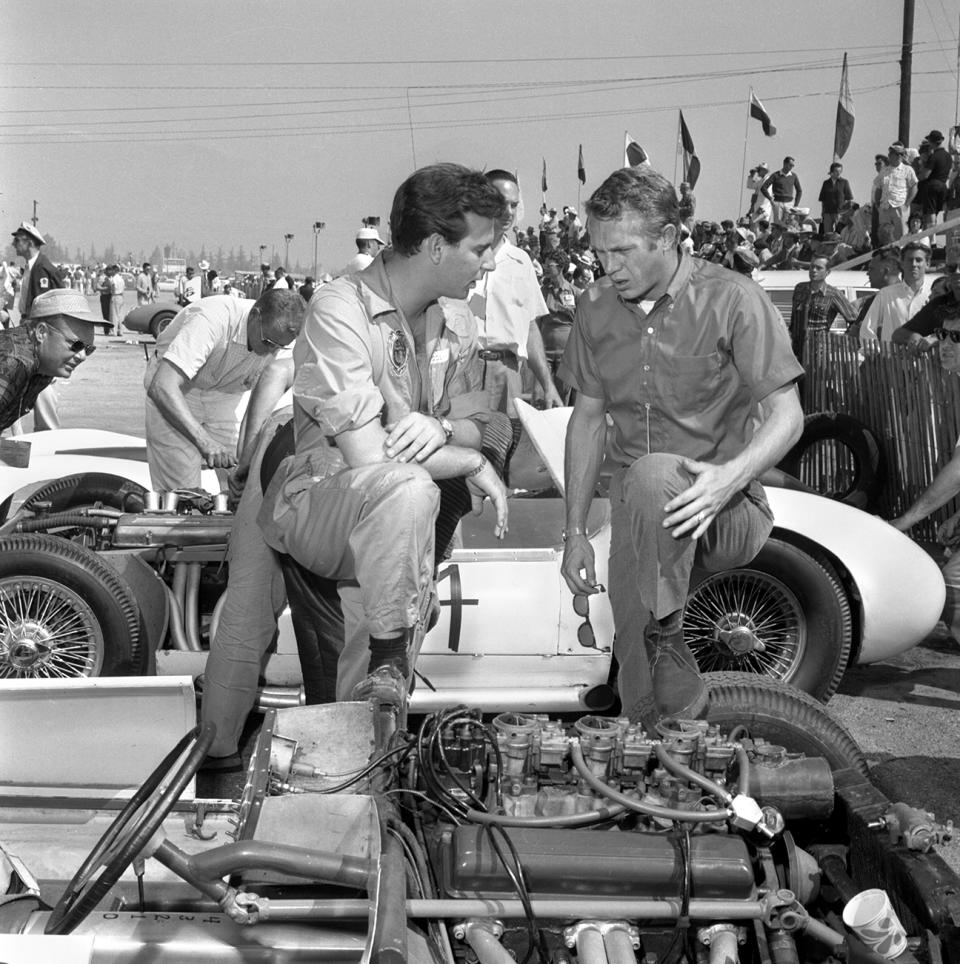Bruce Kessler, Race Car Driver, Yacht Captain and Prolific TV Director, Dies at 88
- Oops!Something went wrong.Please try again later.
- Oops!Something went wrong.Please try again later.
- Oops!Something went wrong.Please try again later.
- Oops!Something went wrong.Please try again later.
- Oops!Something went wrong.Please try again later.
- Oops!Something went wrong.Please try again later.
- Oops!Something went wrong.Please try again later.
- Oops!Something went wrong.Please try again later.

Bruce Kessler, who directed episodes of shows including The Monkees, It Takes a Thief, The Rockford Files, McCloud and The Commish when he wasn’t driving race cars, designing boats or circling the globe in a yacht, has died. He was 88.
Kessler died Thursday at his home in Marina del Rey after a brief illness, his brother, author and columnist Stephen Kessler, told The Hollywood Reporter.
More from The Hollywood Reporter
David Barrington Holt, Former Head of Jim Henson's Creature Shop in L.A., Dies at 78
Cole Brings Plenty, '1923' Actor, Found Dead at 27 After Being Reported Missing
William Kidston, Three-Time Emmy-Winning Photographer, Dies at 68
Survivors also include his wife, actress Joan Freeman, perhaps best known as the love interest of Elvis Presley’s character in Roustabout (1964). She and Kessler were together for 54 years and married for 33.
Kessler served as second-unit director on Howard Hawks’ Red Line 7000 (1965), an action film about stock cars that starred James Caan, before embarking on a three-decade career as a director for television.
His credits included The Flying Nun, Adam-12, Marcus Welby, M.D., Get Christie Love!, Baretta, Switch, CHiPs, The A-Team, The Greatest American Hero, Hunter, Hardcastle and McCormick, The Fall Guy, Riptide, MacGyver, The Commish and Renegade, with the last episode of his career airing in 1997.
Bruce Michael Kessler was born in Seattle on March 23, 1936. He and his family moved to Los Angeles in 1946, and his parents, Jack and Nina, launched a ladies swimwear company in partnership with fashion designer Rose Marie Reid.
With the success of the business, they relocated to Beverly Hills, and Kessler would become pals with James Dean and Steve McQueen, future actors who were racing enthusiasts.
Kessler earned the nickname “Little Lead Foot” as a youngster, and when he was 17, he competed in amateur auto races driving a Jaguar XK120 owned by his mom.
Kessler was supposed to ride with Dean in his silver Porsche to a road race in Salinas, California, in September 1955, but “due to a last-minute change of plan drove up with another friend,” Stephen Kessler wrote last month in a column for the Santa Cruz Sentinel. Dean would die in a car crash that day.
“My brother was 19 at the time, and that bit of luck was emblematic of his subsequent charmed life, on the track and off,” he added.
In 1958, Kessler suffered serious injuries in a fiery crash in the middle of the night in the rain while driving a Ferrari in the 24 Hours of Le Mans (his co-driver was fellow American Dan Gurney). A year later, he spent days in a coma after a race accident in Pomona, California, then retired from the sport after yet another serious crash in 1962 in Riverside, California.

Shifting to show business, Kessler directed and produced The Sound of Speed (1962), a 19-minute, dialogue-free documentary about the Scarab race car, which he helped build. The short played at the Cannes Film Festival and got him work as a technical adviser on racing and chase sequences for action movies and as a script supervisor.
After his experience with Hawks, Kessler directed four first-season episodes of The Monkees in 1966 and helmed the 1968 films Angels From Hell, set in the world of motorcycle gangs, and Killers Three (1968), starring Robert Walker Jr.
He would direct two other movies, The Gay Deceivers (1969) and the Andrew Prine-starring Simon, King of the Witches (1971), as well as several telefilms, including 1977’s Murder in Peyton Place.
The adventurous Kessler and naval architect Steve Seaton helped design the first recreational motor yacht for the company Delta Marine, a 70-foot vessel that Kessler christened Zopilote and launched in 1985.
“At the time, no one had any idea what an iconic and groundbreaking trawler yacht she would become,” Milt Baker wrote in Soundings magazine. “In the world of offshore cruising boats, Zopilote proved to be a game-changer, and it wasn’t long before Delta ceased building fishing boats and shifted entirely to yachts — hefty offshore yachts like Zopilote, then larger and fancier superyachts.”
In 1990, Kessler and Freeman left California aboard Zopilote bound for the South Pacific, a 35,000-mile circumnavigation. When they arrived in Fort Lauderdale, Florida, from Europe after the final leg in 1993, Zopilote had become only the sixth powerboat to complete a trip around the world, Baker noted.
Kessler later helped build the Seaton-designed, 64-foot Spirit of Zopilote, which was delivered in 1997. He and his wife lived and cruised on it for the next 27 years. He wound up logging more than 100,000 nautical miles (and 25,000 hours) as captain of his own vessels.
Survivors include his other brother, Rick.
Best of The Hollywood Reporter
A 'Star Wars' Timeline: All the Movies and TV Shows in the Franchise
'Star Wars': 16 Animated Characters Who Made the Leap to Live-Action
Power Showrunners: Hollywood’s 50-ish Most Influential Writer-Producers of 2023

